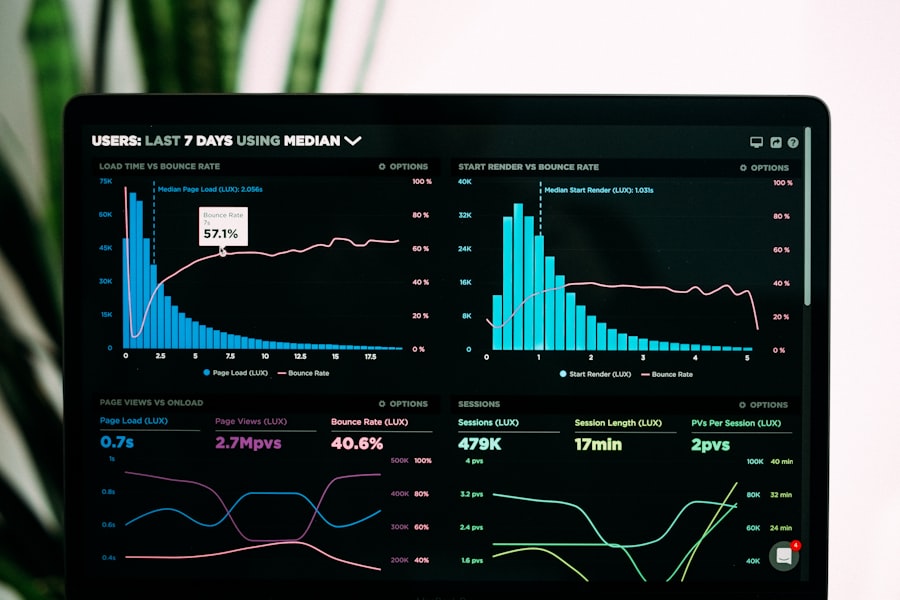As you delve into the economic landscape that emerged after 1971, you will find a world transformed by a series of pivotal events and shifts. The year 1971 marked a significant turning point, as it was the moment when President Richard Nixon announced the suspension of the dollar’s convertibility into gold, effectively ending the Bretton Woods system. This decision not only altered the dynamics of international finance but also set the stage for a new era characterized by floating exchange rates and increased volatility in currency markets.
The post-1971 economic landscape is defined by a complex interplay of globalization, technological advancements, and shifting political ideologies, all of which have shaped the world we live in today. In this article, you will explore the various dimensions of the post-1971 economic landscape, examining how these changes have influenced global trade, financial systems, and social structures. From the rise of neoliberalism to the emergence of China as a dominant economic force, each section will provide insights into the forces that have driven economic growth and inequality alike.
As you navigate through these topics, you will gain a deeper understanding of how historical events have laid the groundwork for contemporary economic challenges and opportunities.
Key Takeaways
- The end of the Bretton Woods system in 1971 marked a shift towards floating exchange rates and a more flexible global monetary system.
- Globalization led to a significant expansion of international trade, connecting economies and creating new opportunities for growth and development.
- Oil shocks in the 1970s had a profound impact on the global economy, leading to inflation, recession, and a reevaluation of energy policies.
- The rise of neoliberalism and deregulation in the 1980s and 1990s reshaped economic policies, emphasizing free markets and limited government intervention.
- China’s emergence as a global economic power has transformed the global economic landscape, impacting trade, investment, and geopolitical dynamics.
The End of the Bretton Woods System and the Rise of Floating Exchange Rates
The dissolution of the Bretton Woods system in 1971 marked a seismic shift in international monetary relations. You may recognize that this system had established fixed exchange rates tied to the U.S. dollar, which was itself convertible into gold.
With Nixon’s decision to abandon this gold standard, countries were no longer bound to maintain fixed exchange rates, leading to a new era of floating currencies. This transition allowed for greater flexibility in monetary policy but also introduced a level of uncertainty that had not been experienced before. As you consider the implications of floating exchange rates, it becomes clear that they have both advantages and disadvantages.
On one hand, countries gained the ability to adjust their currency values in response to economic conditions, which could help stabilize their economies during times of crisis. On the other hand, this newfound flexibility also led to increased volatility in currency markets, making it more challenging for businesses and investors to navigate international trade. The rise of speculative trading in foreign exchange markets further exacerbated these fluctuations, creating an environment where currency values could change dramatically within short periods.
Globalization and the Expansion of International Trade

Globalization has been one of the defining features of the post-1971 economic landscape, fundamentally altering how nations interact economically. As you explore this phenomenon, you will notice that advancements in technology and communication have facilitated unprecedented levels of trade and investment across borders. The reduction of trade barriers and tariffs, coupled with the rise of multinational corporations, has led to an interconnected global economy where goods, services, and capital flow more freely than ever before.
You may find it interesting that globalization has not only expanded markets for businesses but has also created opportunities for consumers to access a wider array of products at competitive prices. However, this expansion has not come without its challenges. The rapid integration of economies has led to concerns about job displacement in developed nations as companies seek cheaper labor abroad.
Additionally, the reliance on global supply chains has made economies more vulnerable to disruptions, as evidenced by events such as natural disasters or geopolitical tensions.
Oil Shocks and the Impact on the Global Economy
| Oil Shock | Impact on Global Economy |
|---|---|
| 1973 Oil Crisis | Stagflation, recession, increased inflation |
| 1979 Oil Crisis | Global recession, high inflation, unemployment |
| 1990 Gulf War Oil Shock | Global economic slowdown, increased oil prices |
| 2008 Oil Price Shock | Global recession, financial crisis, reduced consumer spending |
| 2020 Oil Price Crash | Global economic slowdown, reduced demand for oil, lower energy prices |
The oil shocks of the 1970s were pivotal moments that reshaped the global economy and highlighted its vulnerabilities. As you reflect on this period, you will recognize that the first oil crisis in 1973 was triggered by an OPEC embargo in response to Western support for Israel during the Yom Kippur War. This sudden spike in oil prices sent shockwaves through economies worldwide, leading to inflation and recession in many countries.
The second oil shock in 1979 further exacerbated these issues, as geopolitical tensions in Iran led to another surge in oil prices. These oil shocks had far-reaching consequences that extended beyond immediate economic turmoil. You may observe that they prompted countries to reconsider their energy policies and seek alternatives to fossil fuels.
However, the short-term effects were often painful, as inflation soared and unemployment rose, leading to a period known as “stagflation” in many Western economies.
The Rise of Neoliberalism and Deregulation
In response to the economic challenges of the 1970s, many governments began to embrace neoliberal policies characterized by deregulation, privatization, and a reduced role for the state in economic affairs. As you explore this shift towards neoliberalism, you will find that it was driven by a belief in free markets as the most efficient means of allocating resources. Influential figures such as economist Milton Friedman championed these ideas, advocating for minimal government intervention in the economy.
You may find it noteworthy that this ideological shift had profound implications for social welfare programs and labor rights. As governments rolled back regulations and privatized state-owned enterprises, many workers faced job insecurity and declining wages. While proponents argued that neoliberal policies spurred economic growth and innovation, critics contended that they exacerbated income inequality and eroded social safety nets.
This tension between economic efficiency and social equity continues to shape debates about economic policy today.
The Emergence of China as a Global Economic Power

The late 20th century witnessed the remarkable rise of China as a global economic powerhouse, fundamentally altering the balance of power in international trade and finance. As you examine China’s transformation from a centrally planned economy to one that embraces market-oriented reforms, you will see how this shift has propelled it into the ranks of the world’s largest economies. The country’s accession to the World Trade Organization (WTO) in 2001 marked a significant milestone in its integration into the global economy.
You may be intrigued by how China’s rapid industrialization has not only lifted millions out of poverty but has also created new challenges for other nations. As Chinese manufacturers became key players in global supply chains, many developed countries faced increased competition from low-cost Chinese goods. This dynamic has led to tensions over trade imbalances and intellectual property rights, prompting calls for more equitable trade practices.
As you consider China’s role on the world stage, it becomes evident that its economic ascent has reshaped global dynamics in ways that continue to unfold.
Technological Advancements and the Digital Revolution
The post-1971 era has been marked by remarkable technological advancements that have transformed economies and societies alike. As you explore this digital revolution, you will find that innovations such as personal computers, the internet, and mobile technology have fundamentally changed how businesses operate and how individuals communicate. These advancements have enabled new business models and created opportunities for entrepreneurship on an unprecedented scale.
You may also recognize that while technology has driven economic growth and efficiency, it has also raised important questions about privacy, security, and job displacement. Automation and artificial intelligence are reshaping industries, leading to concerns about workforce displacement as machines take over tasks previously performed by humans. As you navigate this complex landscape, it becomes clear that technological progress presents both opportunities for innovation and challenges that require thoughtful consideration.
Financialization and the Growth of the Financial Sector
The post-1971 economic landscape has seen a significant shift towards financialization—the increasing dominance of financial motives, financial markets, and financial actors in shaping economic activity. As you delve into this phenomenon, you will notice that financial markets have grown exponentially in size and complexity since the 1980s. The rise of investment banking, hedge funds, and private equity firms has transformed how capital is allocated and how businesses operate.
You may find it striking that while financialization has facilitated access to capital for some companies, it has also led to increased volatility in financial markets and greater risks for investors. The 2008 financial crisis serves as a stark reminder of these risks, as excessive speculation and lax regulatory oversight culminated in a global economic downturn. As you reflect on this period, it becomes evident that understanding financialization is crucial for comprehending contemporary economic dynamics.
Income Inequality and the Hollowing Out of the Middle Class
As you examine the post-1971 economic landscape, one pressing issue stands out: income inequality. The rise of neoliberal policies and globalization has contributed to a widening gap between the wealthy elite and working-class individuals. You may observe that while some have reaped substantial rewards from economic growth, many others have experienced stagnating wages or job insecurity.
This trend has led to what is often referred to as the “hollowing out” of the middle class—a phenomenon where traditional middle-income jobs are increasingly replaced by low-wage service positions or high-skill roles requiring advanced education. You might find it concerning that rising income inequality poses significant challenges for social cohesion and political stability. As individuals struggle to make ends meet while witnessing vast wealth accumulation among a select few, discontent can grow within society.
This discontent has fueled movements advocating for higher minimum wages, better labor rights, and more equitable tax policies—issues that continue to dominate political discourse today.
Environmental Concerns and the Push for Sustainable Development
In recent decades, environmental concerns have emerged as critical issues within the post-1971 economic landscape. As you explore this topic, you will recognize that rapid industrialization and globalization have led to significant environmental degradation—climate change being one of the most pressing challenges facing humanity today. The consequences of unchecked economic growth have prompted calls for sustainable development practices that balance economic progress with environmental stewardship.
You may find it inspiring that there is a growing movement toward sustainability among businesses and governments alike. Initiatives aimed at reducing carbon emissions, promoting renewable energy sources, and implementing circular economy principles are gaining traction worldwide. As you consider these efforts, it becomes clear that addressing environmental concerns is not only essential for preserving our planet but also presents opportunities for innovation and new economic models.
The COVID-19 Pandemic and its Economic Implications
The COVID-19 pandemic has had profound implications for economies around the world, further complicating an already intricate post-1971 landscape. As you reflect on this unprecedented crisis, you will see how it exposed vulnerabilities within global supply chains and highlighted disparities in access to healthcare and economic resources. Lockdowns and restrictions led to widespread business closures and job losses, pushing many economies into recession.
You may find it noteworthy that governments responded with unprecedented fiscal measures aimed at stabilizing economies and supporting individuals during this challenging time. Stimulus packages were rolled out globally to provide financial assistance to those affected by job losses or reduced income. However, as economies begin to recover from the pandemic’s effects, questions remain about long-term implications for labor markets, public health systems, and social safety nets—issues that will shape future economic policies for years to come.
In conclusion, as you navigate through these various dimensions of the post-1971 economic landscape, it becomes evident that each element is interconnected within a broader narrative of change and adaptation. From shifts in monetary policy to technological advancements and environmental concerns, understanding these dynamics is crucial for comprehending contemporary economic challenges—and ultimately shaping a more equitable future.
The post-1971 era marked a significant shift in global economics, primarily due to the collapse of the Bretton Woods system and the transition to fiat currencies. This period saw increased volatility in exchange rates and a greater emphasis on monetary policy to manage economic stability. An insightful article that delves into the economic transformations of this era can be found on Hey Did You Know This.
For a deeper understanding, you can read more about it here.
WATCH IT HERE! 💰 The Secret History of the Dollar: How Oil Replaced Gold (The Petrodollar Mystery)
FAQs
What are the key economic events that have shaped the post-1971 era?
Some key economic events that have shaped the post-1971 era include the oil crisis of the 1970s, the rise of globalization and free trade, the collapse of the Soviet Union, the Asian financial crisis of the late 1990s, the dot-com bubble, the 2008 financial crisis, and the ongoing impact of technological advancements on the global economy.
How has globalization impacted the economics of the post-1971 era?
Globalization has significantly impacted the economics of the post-1971 era by increasing international trade, investment, and the interconnectedness of economies around the world. This has led to both opportunities and challenges for countries and businesses, as well as significant changes in the global distribution of wealth and economic power.
What role has technology played in shaping the economics of the post-1971 era?
Technology has played a crucial role in shaping the economics of the post-1971 era by driving productivity gains, creating new industries and jobs, and transforming the way businesses operate and compete. The rise of the internet, digital technologies, and automation has had a profound impact on the global economy, leading to both disruptions and opportunities for businesses and workers.
How has the 2008 financial crisis impacted the economics of the post-1971 era?
The 2008 financial crisis had a significant impact on the economics of the post-1971 era by leading to a global recession, financial market turmoil, and widespread economic hardship. It also prompted major changes in financial regulation, monetary policy, and government intervention in the economy, as well as long-lasting effects on economic growth, employment, and income inequality.
What are some of the major economic trends and challenges of the post-1971 era?
Some major economic trends and challenges of the post-1971 era include income inequality, demographic shifts, environmental sustainability, technological disruption, and the rise of emerging economies. These trends and challenges have significant implications for economic policy, business strategy, and the well-being of societies around the world.
